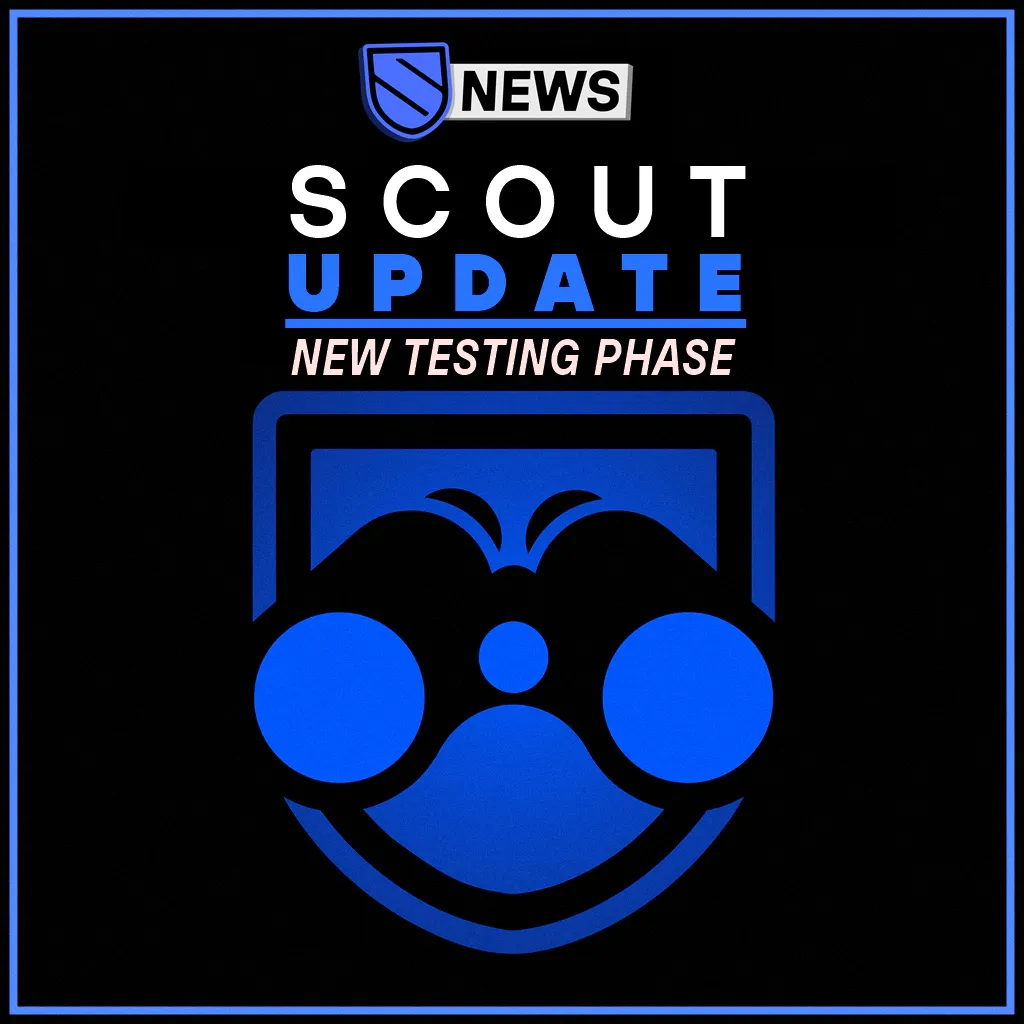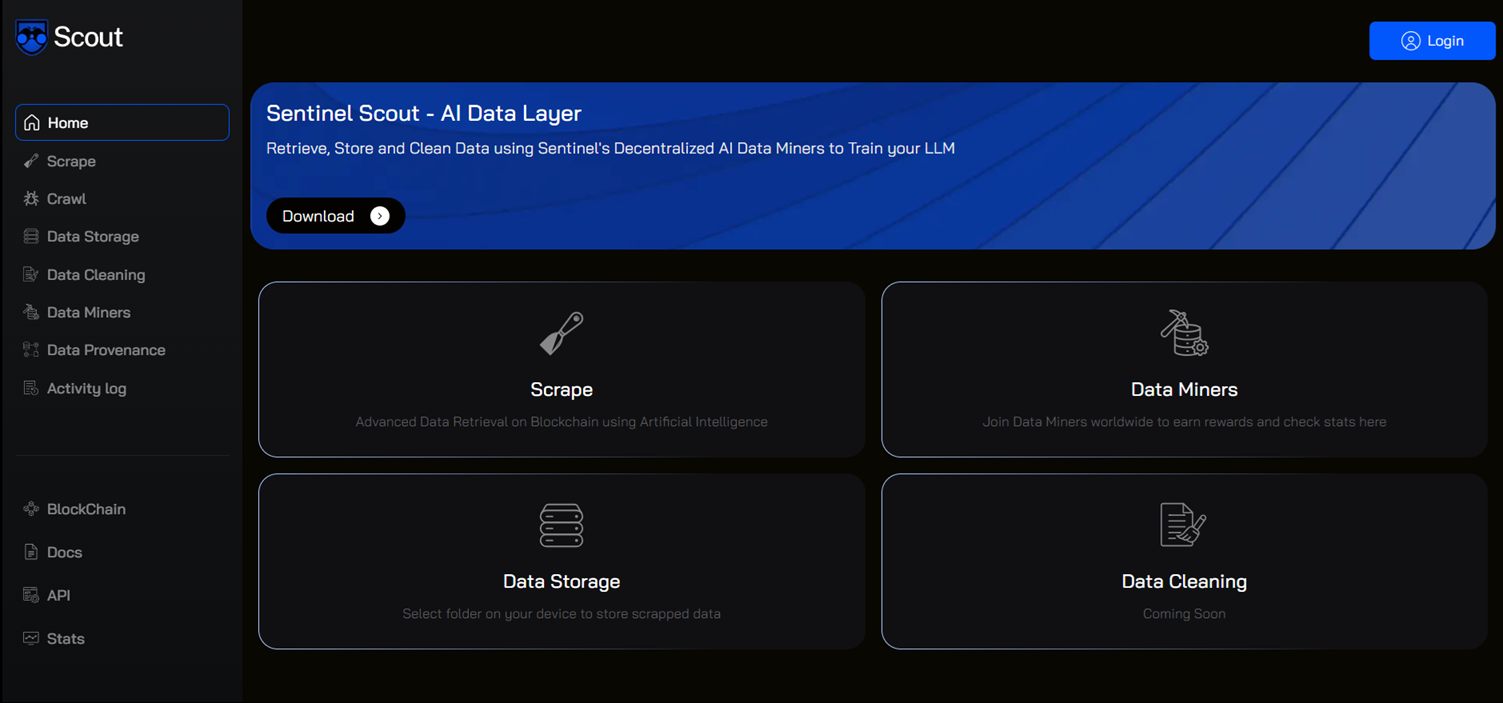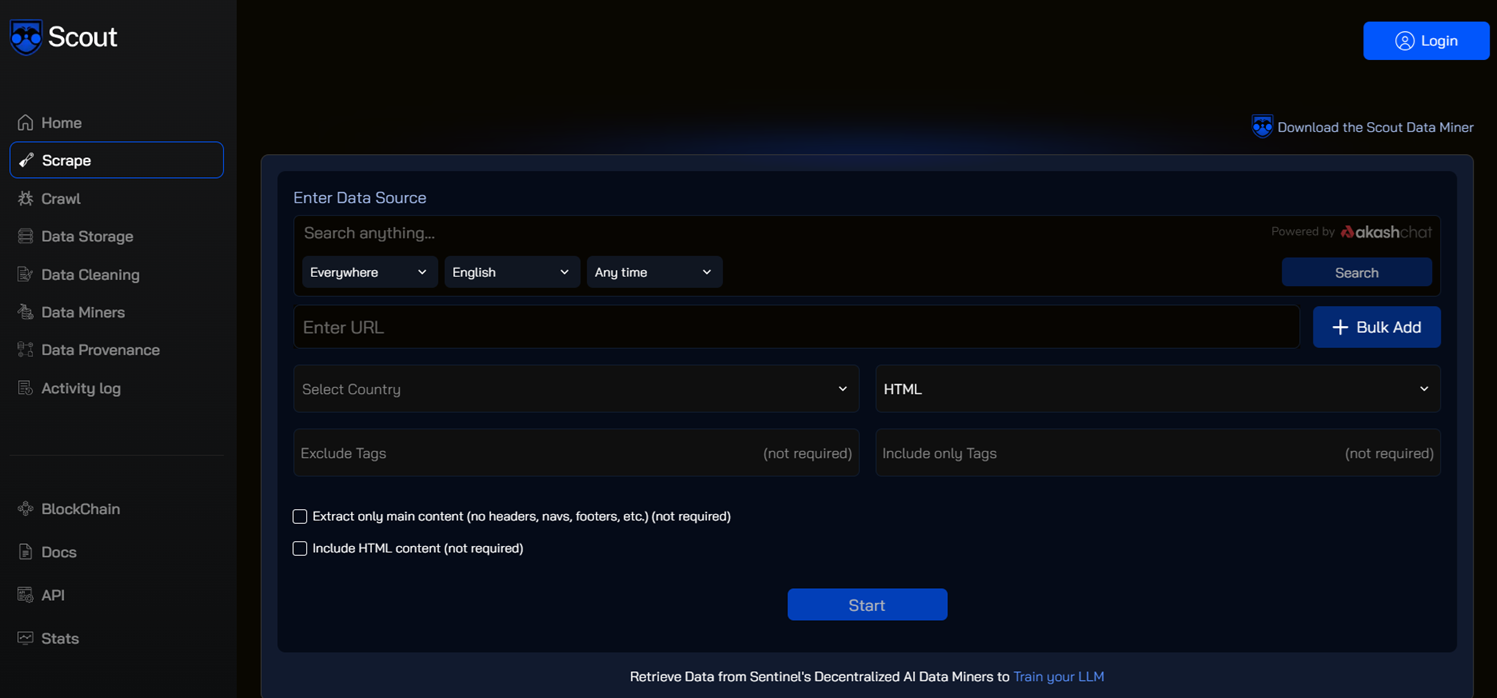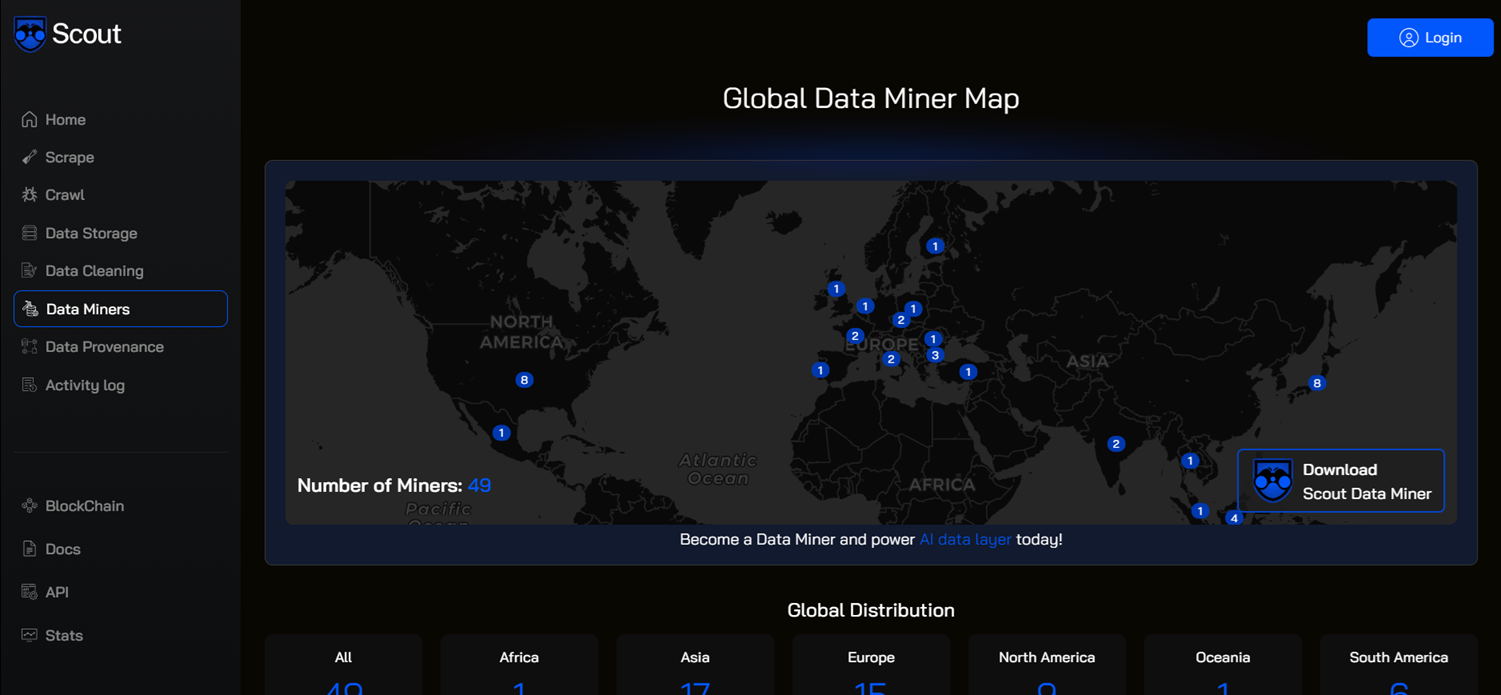Sentinel Scout Website Launches, Consumer Testing Phase Begins
Scout has reached a major new development milestone with the beta launch of its website and consumer dashboard.

Background
For an overview of what Sentinel Scout is, and how it will be used to collect data for both humans and AI, check out the two pieces which we've published on the protocol:
The Latest
The Sentinel Ecosystem brings forward real working products that have the ability to reach the masses.
Sentinel's new AI data acquisition protocol, Sentinel Scout, has been in its testing phase since July of last year. The scope of that testing has been limited to the protocol's backend infrastructure, a network of data miner nodes hosted on mobile devices such as phones and tablets. Over fifty individuals have assisted with testing the nodes, and that number continues to grow by the day.
Yesterday, the Sentinel Foundation announced that Scout testing had progressed to a new milestone: The protocol's consumer frontend is now open for business. The Scout website, including the dashboard for submitting job requests to the miner node network, is now live and available for use.
⚠️ It should again be noted that this service is still in its beta testing phase. Quality of service cannot yet be fully guaranteed.
"A new paradigm for Sentinel begins," the announcement stated. "The Sentinel Ecosystem brings forward real working products that have the ability to reach the masses."
In addition to delivering data to humans, the protocol will be the first scalable infrastructure which allows large language models (LLMs) and AI agents to plug in, retrieve, and clean data in real time. On the agents front, integration with ElizaOS is already in the works.
✅ Currently Available Features
- Data Scraping - The flagship feature of the protocol. Includes Akash-powered intelligent URL identification.
- Data Storage - Allows the customer to select an output destination for the scraped data (local storage is currently the only available option).
- Data Miner Map - An interface which shows the protocol's distributed smartphone node network.
- Activity Log - A log of the customer's previous work orders.
The dashboard's Crawl, Data Cleaning, and Data Provenance pages are still on the way.
Requester Interface



Technical Details
Current available parameters for data requests include:
- Country (at present mostly limited to North America, Europe, India, and East Asia).
- Language (see above).
- Timeframe (ranging back a year).
Data can be returned by Scout in either HTML or JSON format.
Integrations
The dashboard and protocol itself features integrations with Cosmos DePIN partners Akash Network. The Akash Chat API (a permissionless Llama 3.1 deployment powered by the Akash Supercloud) is available for for intelligent URL identification.
The Jackal Protocol blockchain is used as a temporary cache for data scraped by the Scout protocol. In the future, it will also be an option for data output, in addition to other options like remote data center servers and other cloud options like AWS and Google Cloud. At this point in testing, only local storage is available.
More Testing Details
Testers who encounter bugs or other issues with the Sentinel Scout website are encouraged to report them to the team in the AI Data Layer Testing group on Telegram.
If you don't have a Telegram account, feel free to make a post on the r/dVPN subreddit, or tag @SentinelDVPN on X.

P2P NEWS
Powered by the Sentinel Growth DAO
The community's most-trusted nexus for news coverage of the Sentinel Ecosystem and its applications, distributed infrastructure, and third-party contributors across the globe.
SUBSCRIBE
Telegram • X • Newsletter
What is Sentinel?
Sentinel is a peer-to-peer global bandwidth marketplace which powers both privacy-focused consumer products and development utilities. The most prominent of these usecases at present are decentralised VPN (dVPN) applications and data acquisition for the training of AI models.
🎓 To learn more about Sentinel, check out more of our articles, visit the project's official website, or read the documentation.






